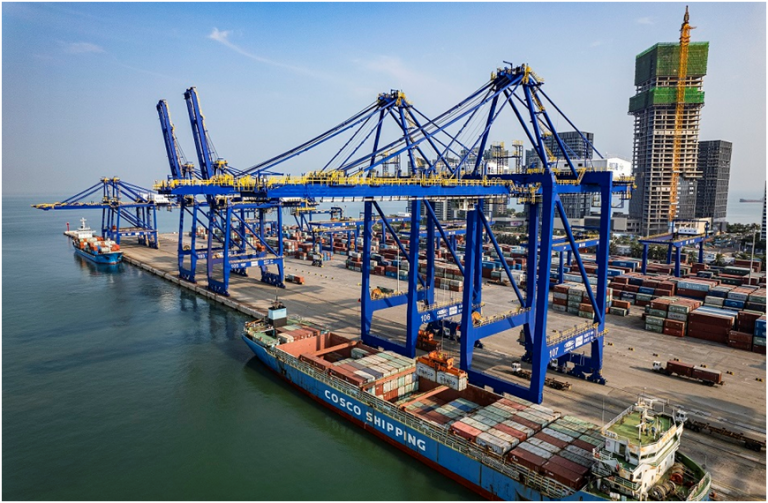
By Li Jie
China’s policy packages aiming at stabilizing economy and foreign trade took effect in the third quarter, as showed in a recent report by the China Council for the Promotion of International Trade (CCPIT).
The problems of freight rates, energy, capital and exchange rates, which were reported by enterprises in the first half of this year, were significantly alleviated in the third quarter, the report said.
On the whole, the confidence and expectations of Chinese foreign trade enterprises have increased significantly, and they continue to show relatively strong resilience, said Sun Xiao, spokesperson of CCPIT and secretary-general of the China Chamber of International Commerce.
According to the report, confidence of 45.1 percent of foreign trade enterprises gradually recovered in the third quarter; and 30.31 percent are expected to achieve year-on-year growth in annual trade, which is 4.09 percentage points higher than in the second quarter.
Large- and medium-sized enterprises are more optimistic about the foreign trade situation for 2022, while the expectations of small- and micro-sized enterprises, although less strong, have improved from the second quarter.

The export value and profit of foreign trade enterprises have both improved. About 22.69 percent of enterprises saw monthly growth in their trade volume , and 19.52 percent reported a rise in profit.
There was a prominent increase in the export profit of high-value-added industries. The railway, ship, aerospace and other transport equipment manufacturing industries, the paper industry, the specialized equipment manufacturing industry and the automobile industry saw strong momentum for foreign trade growth, with 40 percent, 39.29 percent, 35 percent and 28.28 percent of them reporting month-to-month growth in export profit.
ASEAN has become the largest source market of foreign trade orders in China, especially with enterprises’ deeper understanding of the Regional Comprehensive Economic Partnership.
In the third quarter, ASEAN, the EU and the U.S. were the top three main source markets of foreign trade enterprises’ new orders, accounting for 30.6 percent, 30.55 percent and 25.29 percent, respectively.
Foreign trade enterprises were optimistic about new business forms in the trade sector. It is believed by 46.7 percent of the enterprises that comprehensive foreign trade services play a bigger role in promoting exports, while 22.52 percent held that cross-border e-commerce possesses a more important position in this regard.
The spokesperson detailed the difficulties facing foreign trade enterprises, such as shrinking external demand, insufficient orders in hand, high comprehensive costs, repeated epidemics, and increasing economic and trade frictions.
According to the CCPIT survey, 60.02 percent of enterprises said that the decline in orders was the biggest difficulty; 51.83 percent felt the diversion of orders; 56.22 percent thought that the cost of raw materials increased; and 47.68 percent said COVID-19 impacted production.

The report said enterprises expect the country to further expand the scale of tax-and-fee reductions, so as to help them lower costs, improve confidence and solve problems.
They hoped to accelerate the resumption of offline exhibitions in China, actively participate in overseas exhibitions, and see better facilitated flow of cross-border personnel.
Enterprises also called for training courses or consultation services on the use of preferential policies of free trade agreements to help them effectively cope with international economic and trade friction.
The CCPIT, as an agency assisting Chinese organizations and companies in holding overseas economic and trade exhibitions, has rolled out targeted measures to encourage the resumption of such exhibitions.
It is learned that the agency will soon kick off pilot programs on approving delegations to host exhibitions in key countries and to attend key overseas exhibitions.










